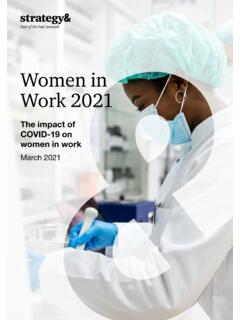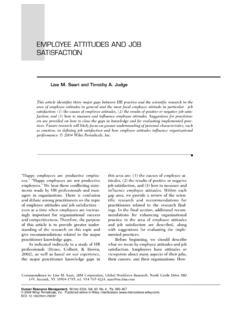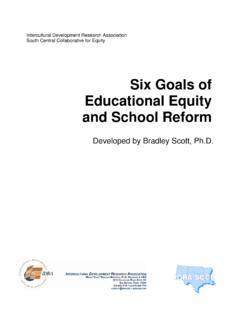Transcription of Analysis of Footwear Impression Evidence
1 The author(s) shown below used Federal funds provided by the Department of Justice and prepared the following final report: Document Title: Analysis of Footwear Impression Evidence Author: Sargur N. Srihari Document No.: 233981 Date Received: March 2011 Award Number: 2007-DN-BX-K135 This report has not been published by the Department of Justice. To provide better customer service, NCJRS has made this Federally-funded grant final report available electronically in addition to traditional paper copies. Opinions or points of view expressed are those of the author(s) and do not necessarily reflect the official position or policies of the Department of Justice.
2 Analysis of Footwear Impression EvidenceFINAL TECHNICAL REPORTA ward Number: 2007-DN-BX-K135 SUBMITTED Department of JusticeOffice of Justice ProgramsNational Institute of Justice810 Seventh Street , DC 20531 AWARDEE:Research Foundation of the State University of New YorkAuthor:Sargur N. Srihari520 Lee Entrance, Suite 202 University at Buffalo, State University of New YorkBuffalo, New York 14260 Tel: 716-645-6164 ext 113 Email: 28, 2010 This document is a research report submitted to the Department of Justice. This report has not been published by the Department.
3 Opinions or points of view expressed are those of the author(s) and do not necessarily reflect the official position or policies of the Department of of Footwear are commonly found in crime scenes. The quality and wide vari-ability of these impressions and the large number of Footwear outsole designs makes theirmanual Analysis time-consuming and difficult. The goal of this research was to develop newcomputational methods that will eventually assist the forensic Footwear examiner in the scenarios encountered by the forensic examiner were addressed: (i) in the investigativephase, to determine the source of an Impression given a known set of outsole prints; whichis useful in homicides and assaults where there are no known prints to match, and (ii) in theprosecutorial phase, to determine whether a particular Impression Evidence is from a knownsuspect s shoe with a quantification of similarity and uncertainty.
4 The research commencedwith developing and acquiring representative Footwear print images so that the algorithmsdeveloped would relate to the real problem encountered. Algorithms for several sub-problemswere studied including image processing to improve the quality of the image for further au-tomatic processing, extraction of features useful for discrimination, a measure of similaritybetween impressions and a content-based image retrieval system to reduce possible matcheswith knowns. The principal method pursued was one where the print is characterized as be-ing composed of a pattern of geometric shapes, principally ellipses; with ellipses being able torepresent straight line segments and circles as well.
5 A distance measure based on comparingattribute relational graphs was developed. The retrieval system compares Evidence featureswith pre-computed features of database entries and since comparison is time-consuming thedatabase entries are clustered. Retrieval performance is better than that of other methodsdescribed in the literature, very few of which deal with real crime scene prints. Future re-search tasks are indicated including integration of the developed methods into a usable tooland a probabilistic measure of uncertainty in the verification document is a research report submitted to the Department of Justice.
6 This report has not been published by the Department. Opinions or points of view expressed are those of the author(s) and do not necessarily reflect the official position or policies of the Department of Executive Summary22 Research Introduction .. practice .. of the problem .. review .. for the research .. Methods .. sets .. system design .. pre-processing .. extraction .. patterns .. representation .. distance .. Analysis .. Retrieval performance evaluation .. Uncertainty computation .. User interface .. Conclusions.
7 Of findings .. for policy and practice .. for further research .. Dissemination ..803 References811 This document is a research report submitted to the Department of Justice. This report has not been published by the Department. Opinions or points of view expressed are those of the author(s) and do not necessarily reflect the official position or policies of the Department of 1 Executive SummaryImpressions of Footwear patterns are the most commonly found type of Evidence in crimescenes. Yet, the poor quality and wide variability of these impressions as well as the largenumber of manufactured outsole patterns makes their Analysis and courtroom presentationdifficult.
8 The objective of this research was to develop new computational methods to assistthe forensic Footwear examiner in the both in the investigative phase as well as theprosecutorial a review of methods of Footwear print examination as practiced in the US, as wellas published literature on algorithms for Footwear Impression Analysis , several subproblemswere identified as needing solutions: image processing to improve the quality of the imagefor further automatic processing, extraction of features for class characterization, methodsfor measuring the similarity of prints for the purpose of ranking the database, identifyingdistinctive features for individualization, and characterizing uncertainty in different approaches to separate foreground pixels from background pixels wereevaluated.
9 The first uses contextual information present in nearby pixels and is based ona machine learning approach known as conditional random fields. Since it uses contextualinformation, it performed better than simple image thresholding algorithms such as onebased on the valley of the pixel histogram. However, an algorithm based on morphologicaloperations and edge detection performed better both in terms of speed and types of features were compared for their suitability for the task. The followingmethods were implemented and evaluated : (i) a fixed length feature vector to represent theentire image: which incorporatesgradient, structural and concavity, or GSC features, andone that has worked well in automatic handwriting recognition, (ii) a variable number of keypoints in the image, each point represented by a fixed length feature vector.
10 Known as thescale invariant feature transformor SIFT, used commonly in content-based image retrievalsearch engines such as Google Similar Images, (iii) a graph representing the structure ofthe components: anattribute relational graph(ARG), based on representing the image as acomposite of sub-patterns together with relationships between them. The structural methodwas found to perform the best and was selected for image structural method is based on first detecting the presence of geometrical patternssuch as short straight line segments, circles and ellipses.














